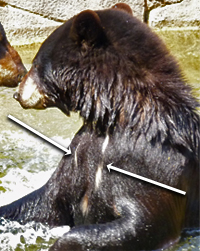
…of identification of the Black Bears at the Museum of Life + Science.
If you’ve spent any time around the Black Bear Exhibit you probably already know that we have four Black Bears on display, Mimi, Virginia, Gus, and Yona. You may also know how to tell them apart from one another, Mimi has two thin white lines on her chest, Virginia has a large white “V” on her chest, Gus is long and lanky, and Yona is the smallest of the four.
What do you do when the bears are walking around the enclosure with their heads to the ground sniffing at the food tossed on the ground by the animal keepers and you can’t see their chests?
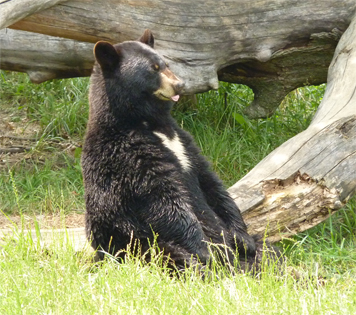
How can you tell if the bear that you’re looking at is smaller than the others when it’s the only bear that happens to be in view at the time? How do you tell them apart under those circumstances? Well, I’m here to tell you how to do just that!
Mimi and Virginia, as you may already be aware, are two female Black Bears. Female black bears have a fairly distinct profile, big and round at the rear tapering to a pointy muzzle. Virginia epitomizes this profile.
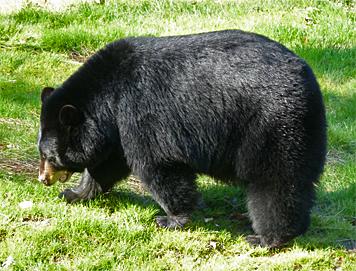
Virginia also has the silkiest black fur of the whole lot. But that’s not a fine point. Let’s get to the fine points of ID. OK, take a look at the photo below.
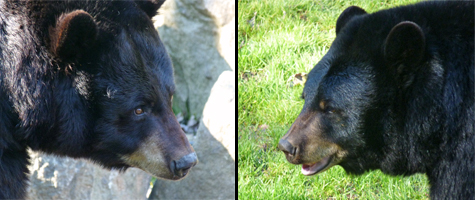
Notice any differences in the two bears. Beside the fact that Mimi has a more pointed faced, do you notice the brown muzzle on these bears? On Mimi, the demarcation between brown fur on the muzzle and black fur is nearly a straight line with a little jog at the bottom. On Virginia, this line is “V” shaped.
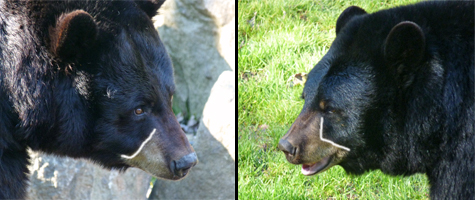
Mimi is also overall larger than Virginia. And Yona, the third female of the four bears is smaller than both of the other females, but if they’re not standing together forget about any size differences. That won’t help you.
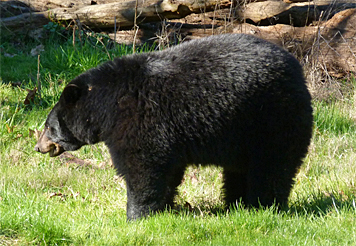
Take a second look at Yona. Do you notice anything different about her muzzle?
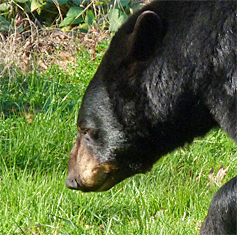
If not, have a look to the right. Look at Yona’s face. The line between brown fur and black fur on her muzzle is blurred, not distinct as in the two other female Black Bears here at the Museum. In fact, the entire muzzle is darker than all of the other bears.
Once you know to look for this mottled muzzle it’s very easy to see, even at a distance. And let’s face it, the bears are never very far away from you, they’re in an enclosure. They’re not always visible, as when they lay down behind a shrub or tree up on the cliff, but if you can see them at all these little facial differences may help identify them for you.
Now, one more picture of Yona.
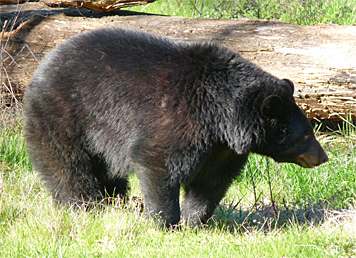
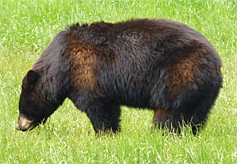
Yona, like Mimi, has brownish fur on her sides. This will probably become more evident when the bears start to shed for the summer (any time now). The thick black coat of winter covers all but a trace of the brown fur on both these bears.
During the next few months all of these bears may look rather ragged as they shed, with a varying amount of brown and black fur present. That is, except Virginia, she usually remains silky black year round, a bit shaggy at times during the shed, but still fairly evenly colored.
What about Gus? Gus is big-headed, long-legged and pretty much the big kid of the group, although Mimi out weighed him by a kg or so (that’s kilogram) at their last weigh-in. But to look at him, he’s simply larger than all of the other bears. This largeness is evident even when he’s standing alone. The large head and long legs are distinctive.
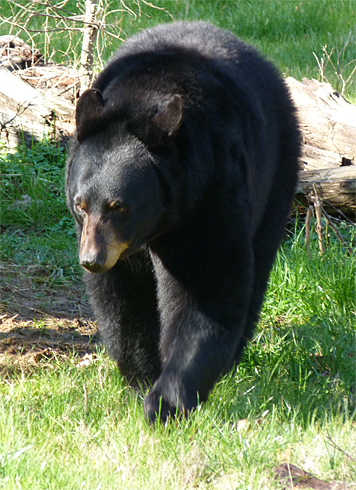
And that’s it. Hope this helps the next time you’re standing at the Black Bear Overlook and can’t figure out who’s who out there among the ursine inhabitants of the enclosure.
Any comments or suggestions are welcomed.
This is great Greg!
Thanks, Kimberly!
Awesome post, Ranger Greg! The arrows on the photos are very helpful for pointing out the details!
Thanks Karyn.
I get so many bear questions throughout the day, from “Are the bears out today?” (they’re always out during open hours, unless under vet. care or during yard maintenance) to “How do you tell them apart?” So I thought that a few tips for the visiting ursine lover might help. And, these tips will even be helpful while the bears are going through their annual molt.